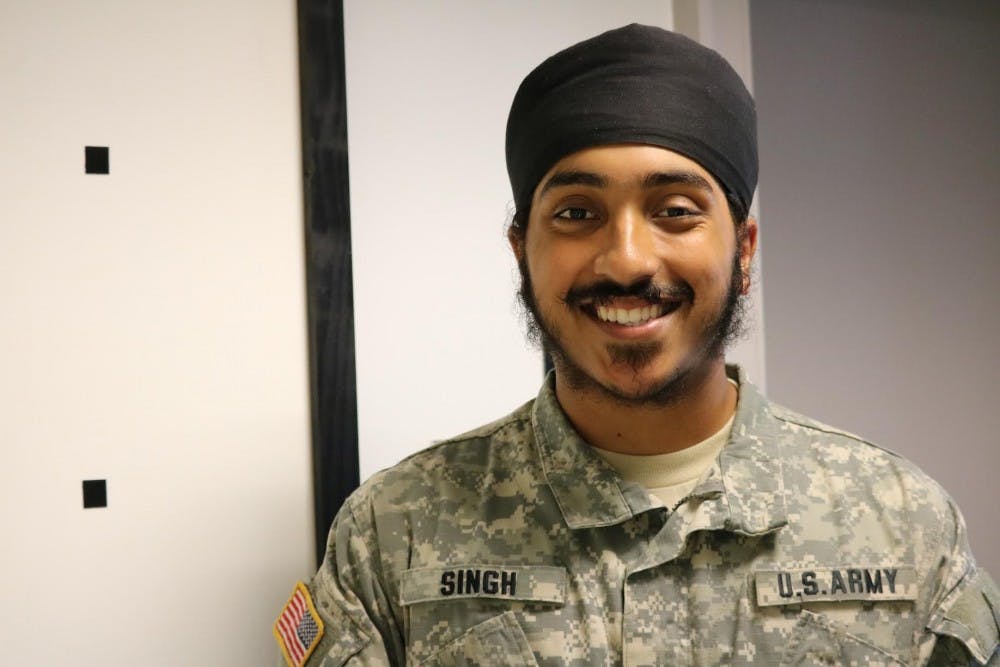For many University students, the thought of waking up at 5 a.m. is highly unpleasant. But for Army Reserve Officers’ Training Corps students, early mornings are necessary for managing a double life as both a cadet and a student.
Harpreet Singh, an Army ROTC cadet and a fourth-year Engineering student, said time management is the most difficult part of balancing both aspects of his college career.
“You don’t want to give your half effort for either,” Singh said. “You want to give your best effort for both.”
The Army cadets hit the gym at 6 a.m. every Tuesday. Following an hour-long workout, they spend 30 minutes playing sports like ultimate frisbee or football.
“That’s one of our favorite parts,” said Peter Fant, an Army ROTC cadet and a second-year College student. “You just get to have fun with all your friends, and it’s not super serious, but you do get to work on communication and teamwork.”
At 7:30 a.m., all cadets eat breakfast together at the Observatory Hill Dining Hall. Students of all years will sit together, which provides an opportunity for the cadets to really get to know each other and offer advice for success.
After breakfast, the cadets go home and shower before they go to their classes. Most Army ROTC students take classes for their majors, along with a required U.S. history course and a three-credit ROTC class about Army life and its rules and regulations.
The cadets reconvene for field training exercises at 4 p.m., where they practice drills using rubber M16 rifles.
“We’ll have mock-opposition forces, which is usually the fourth-years dressed up as the opposition,” Singh said. “We’ll simulate real-life training exercises to get them well-trained as to what they might experience eventually in their career as an officer.”
In accordance to the University’s self-governance principles, the fourth-year Army ROTC cadets — or Military Science 4s — run the training.
“There’s a lot of behind-the-scenes coordination that occurs outside the classroom,” Military Science Instructor Capt. Jane Petrick said. “By the time you’re a third- and fourth-year, ROTC is taking up more significant time. I would say it’s close to the equivalent of a part-time job.”
“It’s on us to actually conduct the training and actually plan the training,” Singh said. “We have the workload of a typically Army officer.”
The University’s ROTC program requires less mandatory physical training than other schools. The cadets only wear uniforms and work out together on Tuesdays. On other days, fitness is the responsibility of each individual cadet to structure into his or her schedule.
“We really want cadets to get the college experience,” Petrick said. “That’s important to us because we think that equates a really well-rounded officer.”
“It changes the way I think,” Singh added. “I have a more worldly scope. They really push us to be better people and better cadets and better students.”
While the University’s Army ROTC program may have fewer daily requirements than other schools’, the students must conduct themselves in accordance to Army standards every day. This diligence and sense of honor helps shape successful cadets and students.
“We’re encouraged to behave as if we were wearing our uniform every single day,” Singh said. “If we wouldn’t do it in uniform, we shouldn’t do it in our daily practices.”
Singh’s experience with the ROTC is unique because he didn’t begin the program with a national scholarship. He joined as a University student with aspirations to go to medical school — which Singh now plans to have the Army pay for. Other students, like Fant, hope to become an Army officer.
“We are all working toward this common goal,” Fant said. “The Army … [wants] to operate effectively and work as a team to achieve the mission, so everyone has that kind of mindset.”
Fant joined ROTC because he wanted to give back to the country — both of his parents were in the Army, and he wanted to do his part. He said that the positive experiences he had growing up with this Army influences helped inspire him to do his part for his country.
Fant’s favorite part of the program is the people and how they all collaborate.
“At U.Va., everyone bleeds blue and orange,” Fant said. “In the Army … Everyone bleeds green.”







